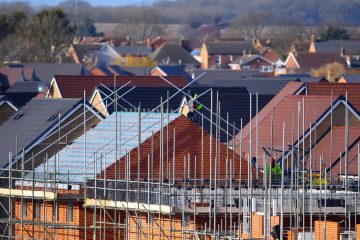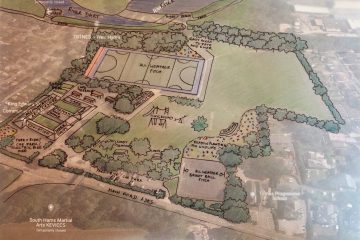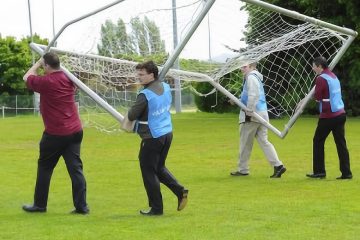The long established Inclusive Totnes Group have written to the stakeholders at the school with this very comprehensive analysis of the very serious Air Quality Issues on the A385 by the school and have given permission to reproduce the report in full here:

KEVICC Lower Field, the Totnes Air Quality Management Area and air pollution risks to children and adolescents
22nd August 2022
http://www.inclusivetotnes.org.uk/
hello@inclusivetotnes.org.uk
Inclusive Totnes is a community-based organisation that seeks to promote and support access and inclusion for all in all aspects of town life.
This briefing note is for the attention of all stakeholders with an interest in the future sale of KEVICC Lower Field. It focuses on the issue of air pollution as a serious risk to health for children and adolescents and vulnerable groups, including those with long- term health conditions affecting respiratory or cardiac health, such as asthma.
Lower Field is of particular importance to the health of KEVICC students and other members of the community because of its strategic position as a large green space that directly adjoins the Totnes Air Quality Management Area (AQMA) and the school. Inclusive Totnes is concerned about air quality problems in Totnes due to the serious implications of poor air quality for the health of local residents and evidence that the risks to health disproportionately impact children and adolescents, the elderly and people with disabilities due to long-term health conditions, who are groups withprotected characteristics under the Equality Act 2010.
1. The Totnes Air Quality Management Area (AQMA)
The Totnes AQMA, one of three designated air quality management areas in South Hams, was declared in 2009 due to levels of Nitrogen Dioxide (NO2) consistently breaching legal limits. The main cause of the elevated levels of NO2 is road transport as there are no industrial or commercial sources within close proximity. The AQMA extends along the entire A385 corridor through the town, including the section of the A385 that directly adjoins Lower Field and the main KEVICC site. Consequently, the majority of children and young people walking to and from school on the main route from town have to walk through the AQMA on a daily basis.
Despite the declaration of an AQMA and the associated requirement for a Clean Air Strategy to address the problem, there has been no significant improvement in air quality within the Totnes AQMA area since it was originally declared thirteen years ago – indeed, the Totnes AQMA was extended in 2016 due to new monitoring data. South Hams District Council does not currently monitor other air pollutants such as particulate matter or sulphur dioxide, which are also known to be highly damaging to health, and we understand that no automatic pollution monitoring has been conducted in Totnes since 2014 due to cost-cutting by the district council.
In its 2019 AQMA annual status report – the last report prior to the COVID pandemic – SHDC reported that Totnes was the only monitored site in South Hams and West Devon where NO2 levels had not improved, a situation which it described as ‘troubling’. No annual status report was published in 2020 owing to the COVID-19 pandemic. In 2021, the Council reported a slight improvement in the NO2 levels recorded in Totnes in 2020 but warned that, due to the impacts of COVID restrictions on traffic volumes, this data could not be relied upon as an accurate indication of the true situation.
The Clean Air Strategy for South Hams and West Devon acknowledges that there are “no easy solutions” to the air pollution problem in Totnes; meanwhile, the only potential measure that could have a significant impact on improving air quality (building a bypass) has been shelved due to the cost and difficulties that would be associated with such a major infrastructure project. In any case, this would not offer any short-term solution to the acute air pollution problem in Totnes.
Map of Totnes showing the declared AQMA:

Given the gravity of the air pollution problem and mounting evidence of the serious health impacts on local communities, and particularly on children and young people, it is clear that insufficient attention has been given to the impacts of air pollution of planned housing and other developments along the A385 corridor – not least the health risks for children and young people walking to and from school.
2. Air pollution – a serious risk to the health and cognitive development of children and young people
In the light of new evidence of the harms to health, air pollution has been declared a public health emergency by health leaders including the World Health Organisation (WHO), the British Medical Journal (BMJ) and former NHS Chief Executive, Simon Stevens. The evidence is particularly worrying for the health of children and young people. For example, a recent systematic review of the relationship between air pollution and cognitive functions in children and adolescents reports that:
– Adverse effects of air pollutants on selected cognitive or psychomotor functions were found in all of the studies. Exposure to nitrogen dioxide, for example, was linked to impaired working memory, general cognitive functions, and psychomotor functions
– Particulate matter 2.5 was linked to difficulties in working memory, short-term memory, attention, processing speed, and fine motor function; black carbon was linked to poor verbal intelligence, nonverbal intelligence, and working memory; airborne copper was linked to impaired attentiveness and fine motor skills; isophorone was linked to lower mathematical skills; and polycyclic aromatic hydrocarbons in fetal life were linked to lower intelligence scores.
– Studies using MRI showed that high concentrations of air pollutants were linked to changes in the brain’s white matter or lower functional integration and segregation in children’s brain networks – According to some studies, neuroinflammation, the e4 allele of the apolipoprotein E
gene, and gutathione-S-transferase gene polymorphism processes may play a role.
UNICEF reports that toxic air from pollution can damage children’s growth and leave them with lasting health problems, posing a particularly severe risk to those children and young people already suffering from heart conditions or respiratory problems, such as asthma. Air pollution is also associated with a higher prevalence of asthma in children. A landmark inquest judgement last year on the cause of death of nine year-old Ella Adoo-Kissi-Debrah in 2013 found air pollution “made a material contribution” to her death; Coroner Phillip Barlow concluded that there is “no safe level of particulate matter” in the air and called for national pollution limits to be reduced. This conclusion is confirmed by a recent study in Canada which has found that harm from air pollution was seen at concentrations at about a half of the latest World Health Organization guideline.
Failure to adequately tackle air pollution, UNICEF contends, is a failure to uphold every child’s right to grow up in a clean and healthy environment – a right protected by the UN Convention on the Rights of the Child and a critical requirement for every child to grow, develop and learn to their full potential. Public Health England estimates that the total health and social care costs of air pollution in England, including costs associated with
childhood asthma, could reach a cumulative cost of £5.3 billion by 2035.
3. The importance of KEVICC Lower Field as a green space to mitigate air pollution in theAQMA / A385 corridor and to protect the health of children and young people, particularly KEVICC students
The location of Lower Field as a large open green space adjoining the A385 in the area directly adjacent to the school makes it a crucial and sensitive site in respect of the air pollution problem in Totnes, and particularly in respect of air quality and associated health risks for children and young people in the immediate vicinity the KEVICC site within the AQMA.
In urban areas, parks and green spaces play an important role in mitigating air pollution from traffic by reducing the building density and enhancing urban ventilation, thereby helping with air pollution dispersal. Trees and plants can also affect particulate deposition and modification. The dispersal, deposition and modification effects of vegetation and open green spaces are therefore important for reducing the concentration and toxicity of air-borne particles and harmful gases in polluted air.
By contrast, further urbanisation of existing green spaces is likely to further intensify concentrations of toxins and particulates in the air due both to increased traffic volumes and potential congestion associated with the new urban development itself, in combination with reduced urban ventilation causing slower dispersion with polluted air becoming trapped between buildings and other urban structures in the locality. In certain weather conditions, this can cause acute spikes in air pollution that are particularly hazardous to health, especially for those with asthma or other respiratory or cardiac health conditions.
Positioned directly opposite the school and directly adjacent to one of the most congested sections of the Totnes AQMA, Lower Field provides a vital open green space to help mitigate the air pollution problem from the A385 which poses such a significant health risk to children and young people attending the school. Any decision regarding the sale of Lower Field that could result in the field being built over with housing or commercial development will directly risk intensify an already dangerous air pollution problem in and around the KEVICC site and add further pollution to children’s walking routes to and from school.
4. The imperative to include public health considerations and avoidance of future health risks for KEVICC students in the assessment of ‘best value’ in considering bids for Lower Field
As organisations with responsibility and accountability for the health and wellbeing of children and young people in Totnes, it is imperative that KEVICC and SHDC take full and urgent heed of the health warnings from the latest research and from health organisations such as WHO and the BMJ in respect of any decisions that have longer-term implications for the air pollution problem in Totnes.
The health risks to children and young people from air pollution, and the potential for this problem to be intensified by further urbanisation and loss of green space in areas adjoining the AQMA, has a fundamental bearing on any ‘best value’ assessment as regards bids potential buyers’ intentions for the field. Judgement of best value must take full account of the full range of indicators available for consideration of the social, economic and environmental value from selling the field.
Any proposal or bid that will result in the loss of Lower Field as an open green space will risk intensifying the air pollution problem within an AQMA where pollution levels are already breaching legal levels (and very significantly breaching levels deemed safe by the WHO), and will therefore directly risk the health and development of KEVICC students and other members of the community. Turning a blind eye to the air pollution problem and associated health concerns by giving a green light to the urbanisation of this vital green space would also expose the school to significant reputational damage. In the light of the Coroner’s findings last year in the inquest into the death of Ella Adoo-Kissi-Debrah, we believe that the risks to children’s health and development resulting from the urbanisation of Lower Field would also represent grounds for potential future legal action on the basis of public health, human rights, equality and environmental considerations. While it is understandable that KEVICC Governors, the Trustees of the Dart Vale Learning Trust and the Academy Trust wish to raise funds for the school through selling Lower Field,
this should not be at the expense of air quality and the longer-term health and development of children and young people and others in the community. It is simply not defensible to jeopardise the health and rights of children for short-term financial gain, however tempting
it may seem.
In any decision about the future of Lower Field, the only options that to be considered should be those that will not result in the field being built over, whether for housing or commercial development.
For queries or further information about this briefing, please contact:
hello@inclusivetotnes.org.uk


